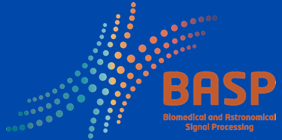Astronomical and Biomedical sciences find common roots in their need to process acquired data into interpretable signals or images. Nevertheless, the corresponding communities are almost completely disconnected. Fostering contact and creating collaborations between them could pave the way to new scientific advances in each field thanks to the knowledge of the other, in addition to promoting common research approaches for signal processing issues. The international BASP frontiers workshop was created in that perspective.
As both the Astronomy and the Biomedical sciences communities are extremely large, even when restricted to signal processing, we intend to concentrate each workshop on sub-areas sharing specific problems. BASP Frontiers 2011 will aim to gather researchers in the fields of Magnetic Resonance (MR) imaging and Radio Interferometric (RI) imaging, around their common data acquisition issues related to Fourier sampling, together with experts in signal processing (SP). The scientific and clinical challenges underpinning these imaging procedures will also be emphasized, as well as the relations with connected fields.
The following paragraphs concisely describe the MR and RI imaging techniques in their relations to Fourier sampling.
MR imaging is a non-invasive and non-ionizing biomedical imaging technique that finds its superiority in both the flexibility of the data acquisition process and the multiplicity of its contrast mechanisms. It is used in various modalities ranging from structural imaging, notably used for everyday diagnosis, to functional imaging participating to advances in neuroscience. MR signals are created by nuclear magnetic resonance in the tissues of interest of the human body. The application of a linear gradient magnetic field provides a Fourier coefficient of the signal at a spatial frequency proportional the gradient strength and its duration of application. A complete Fourier coverage can thus be obtained, up to a given resolution. Current issues in the field consist of enabling more complex modalities such as spectroscopic, diffusion or functional imaging.
Aperture synthesis in RI is a powerful technique in radio astronomy, allowing observations of the sky with otherwise inaccessible angular resolutions and sensitivities. With new international projects under construction and design, notably the Square Kilometer Array (SKA) whose science goals range from cosmology or astrobiology to strong field gravity, it also represents a significant part of the future of radio astronomy. The correlation of the incoming electric field from the radio source of interest on a pair of telescopes of the interferometric array provides the Fourier coefficient of the signal at a spatial frequency proportional to the baseline, i.e. the distance between the telescopes. The multiple telescope pairs hence synthesize, through Fourier encoding, the aperture of a single dish of the size of the whole array. The resulting incomplete Fourier coverage defines an ill-posed inverse problem in the perspective of signal reconstruction. Current issues in the field range from imaging to data handling and calibration.

